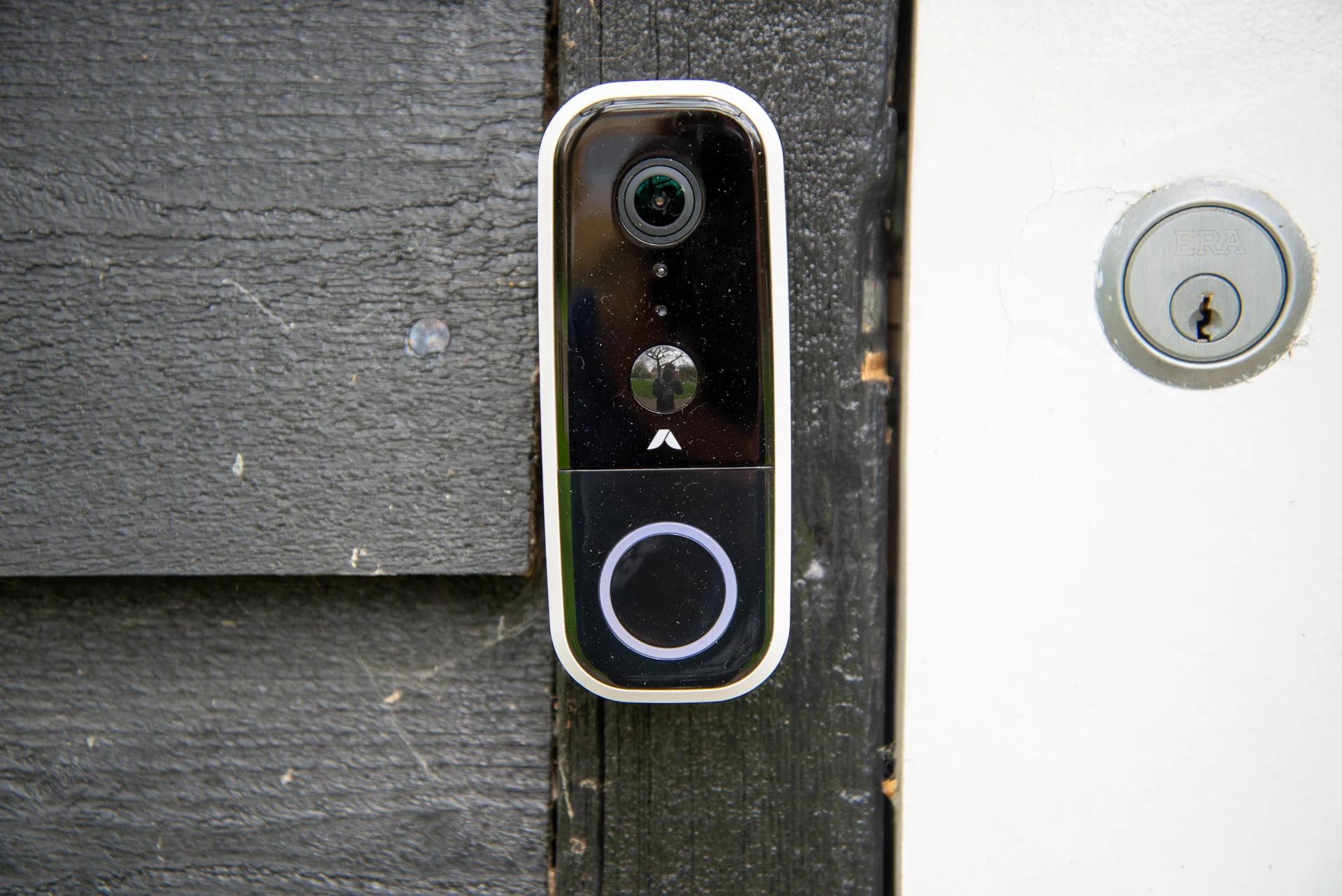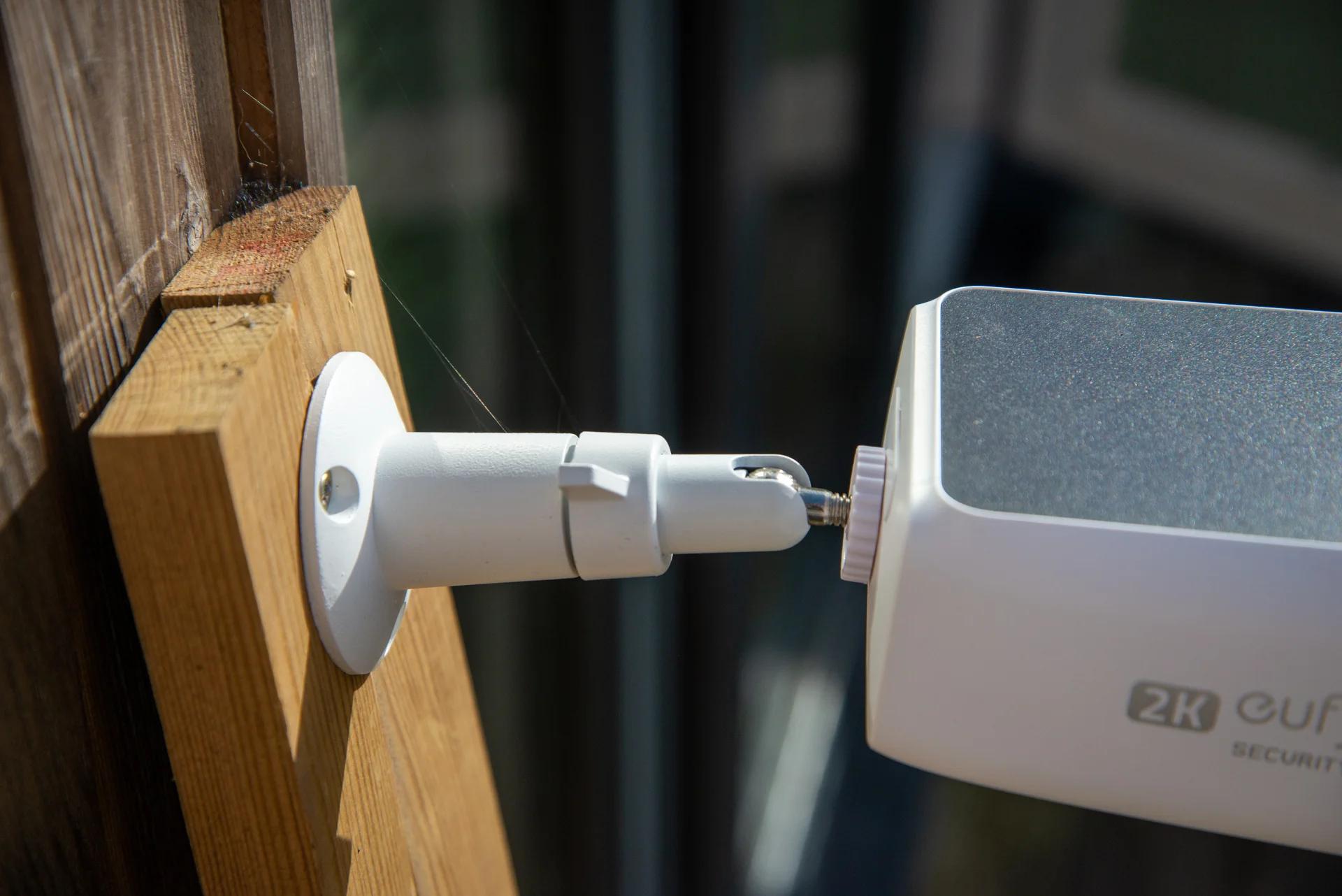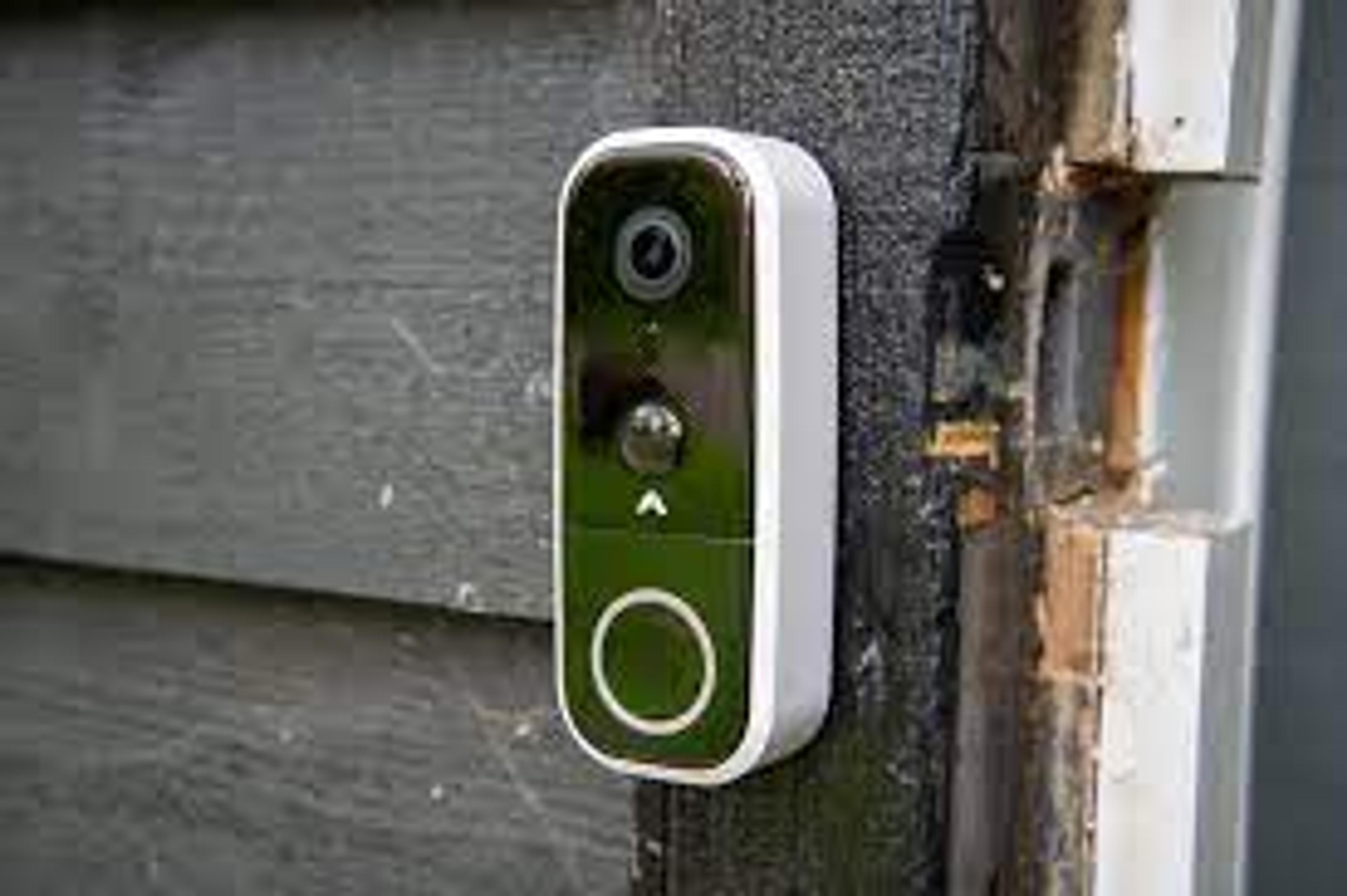When your doorbell fails to detect motion, it can be frustrating and concerning, mainly if you rely on it for security. Several factors could contribute to this issue, ranging from technical malfunctions to environmental conditions.
Understanding these potential causes can help you troubleshoot the problem effectively. In this guide, we'll explore common reasons why your doorbell may not detect motion and provide practical solutions to resolve the issue.
Whether adjusting sensitivity settings, checking power sources, or addressing obstructions, we'll help you identify and fix the problem to regain confidence in your doorbell's functionality and maintain peace of mind regarding your home's security.
Why is my Doorbell not picking up motion?
Several factors could be at play when your doorbell fails to pick up motion, affecting its functionality. One common reason is incorrect sensitivity settings. The doorbell may not detect slight movements if the sensitivity is too low. Conversely, if it's too high, it might trigger false alarms due to minor disturbances like passing cars or animals.
Another possible issue is the placement of the doorbell. If it's positioned too high or angled incorrectly, it may not capture motion effectively. Additionally, obstructions such as bushes, trees, or other objects in the camera's field of view can hinder motion detection.
Technical malfunctions, such as software glitches or hardware failures, could also be blamed. Check for firmware updates or resetting the device to factory settings to troubleshoot software issues. Hardware problems may require professional assistance or replacement of faulty components.
Finally, environmental factors like extreme weather conditions or lighting changes can impact motion detection. Direct sunlight, reflections, or shadows may interfere with the camera's ability to detect movement accurately.

By considering these potential causes and implementing appropriate solutions—such as adjusting settings, repositioning the device, or addressing technical issues—you can resolve the problem and ensure your doorbell effectively captures motion for enhanced security and peace of mind.
Discover the Top Reasons Your Doorbell Isn't Detecting Motion
Incorrect Sensitivity Settings: Your doorbell's motion detection sensitivity may be too low or too high, causing it to miss or falsely trigger alerts. Adjust the sensitivity settings to optimize motion detection based on your needs and environment.
Poor Placement or Angle: Improper positioning or angling of the doorbell can limit its field of view and hinder motion detection. Ensure the device is installed at an appropriate height and angle to capture motion effectively.
Obstructions in the Camera's View: Objects such as trees, bushes, or decorative elements may obstruct the camera's view and prevent it from detecting motion accurately. Trim foliage and remove obstacles that may interfere with the doorbell's line of sight.
Technical Malfunctions: Software glitches or hardware failures can impair the doorbell's motion detection capabilities. Check for firmware updates and consider resetting the device to factory settings to troubleshoot software issues. For hardware problems, consult the manufacturer's troubleshooting guide or seek professional assistance.
Environmental Factors: Extreme weather conditions, changes in lighting, or glare from sunlight can impact motion detection. Ensure the doorbell is protected from direct sunlight and adjust settings for lighting changes throughout the day.
Interference from Nearby Devices: Other wireless devices operating on similar frequencies may cause interference and disrupt motion detection. Keep the doorbell away from sources of interference or adjust frequency settings to minimize disruptions.
Why Isn't My Doorbell Catching Movement?
When your doorbell isn't capturing movement, several potential reasons may be causing the issue. Firstly, check the sensitivity settings of the motion detection feature. If set too low, the doorbell may not pick up subtle movements, while a sensitivity level that's too high could lead to frequent false alarms.
Another factor to consider is the positioning and angle of the doorbell. Ensure it's installed at an appropriate height and angle to cover the desired area effectively. Obstructions such as trees, bushes, or decorative elements in the camera's view can also hinder motion detection.
Technical issues, such as software glitches or hardware malfunctions, might be at fault. Try resetting the device or updating its firmware to address potential software issues. If hardware problems persist, contact the manufacturer for assistance.

Additionally, environmental factors like extreme weather conditions or changes in lighting can affect motion detection performance. Direct sunlight, reflections, or glare may interfere with the camera's ability to detect movement accurately.
By troubleshooting these potential causes, adjusting settings, and ensuring proper installation, you can resolve the issue and provide your doorbell that effectively captures movement for enhanced security and peace of mind. Regular maintenance and monitoring will help maintain optimal functionality over time.
Diagnose Your Non-Responsive Doorbell Sensor
Diagnosing a non-responsive doorbell sensor requires a systematic approach to effectively identify and address potential issues. Here's a comprehensive guide to help you troubleshoot:
Check Power Supply: Ensure the doorbell receives power by checking the circuit breaker or fuse box. Test the power supply to the doorbell unit using a multimeter to verify adequate voltage.
Inspect Wiring Connections: Examine the wiring connections at the doorbell and chime to ensure they are securely connected and free of damage or corrosion. Tighten any loose connections and replace damaged wiring if necessary.
Test Transformer: If the doorbell is hardwired, test the transformer's output voltage to ensure it meets the manufacturer's specifications. Replace the transformer if voltage levels are inadequate.
Reset Device: Try resetting the doorbell to factory settings to troubleshoot software issues. Refer to the manufacturer's instructions for specific reset procedures.
Check Batteries: If the doorbell operates on batteries, ensure they are correctly installed and fully charged. Replace the batteries if they are depleted or outdated.
Inspect Sensor: Clean the sensor lens to remove any dirt, debris, or condensation that may obstruct its function. Adjust the sensor's sensitivity settings as needed to optimize performance.
Test Functionality: Finally, test the doorbell's functionality by triggering the sensor manually or using a test button. If the doorbell still does not respond, consider seeking professional assistance or contacting the manufacturer for further troubleshooting.
Step-by-Step Process to Restore Motion Detection in Doorbells
Restoring motion detection in doorbells requires a systematic approach to identify and address potential issues effectively. Follow this step-by-step process to troubleshoot and restore motion detection:
Check Power Supply: Begin by ensuring the doorbell is receiving power. Check the circuit breaker or fuse box to ensure power flows to the doorbell unit. A multimeter tests the voltage at the doorbell terminals and verifies the power supply is adequate.
Inspect Wiring Connections: Examine the wiring connections at the doorbell and chime to ensure they are securely connected. Look for loose or damaged wires and tighten connections or replace damaged wiring.
Test Transformer: If the doorbell is hardwired, test the transformer's output voltage to ensure it meets the manufacturer's specifications. Replace the transformer if voltage levels are insufficient.
Reset Device: Try resetting the doorbell to factory settings to troubleshoot software issues. Refer to the manufacturer's instructions for specific reset procedures.
Check Sensor Lens: Clean the sensor lens to remove any dirt, debris, or condensation that may obstruct its function. Ensure the lens is free from obstructions and adjust its positioning if necessary.
Adjust Settings: Access the motion detection settings on the doorbell and adjust the sensitivity and detection range as needed. Test different settings to optimize motion detection while minimizing false alarms.
Test Functionality: Finally, test the doorbell's motion detection functionality by walking within its detection range or using a test button if available. Verify that motion triggers an alert or recording as expected.
Avoiding Common Pitfalls that Prevent Doorbell Motion Detection
Avoiding common pitfalls that prevent doorbell motion detection is crucial for maintaining reliable home security. Here are some essential tips to help you prevent these issues:
Improper Installation: Ensure your doorbell is installed correctly, with the sensor positioned to cover the desired area. Follow the manufacturer's instructions carefully, and avoid obstructing the sensor's view with objects or decorations.
Incorrect Sensitivity Settings: Adjust the sensitivity settings of the motion detection feature to suit your environment. Avoid setting it too low, which may cause the doorbell to miss movements or too high, leading to false alarms triggered by minor disturbances.

Obstructions: Keep the area around your doorbell clear of obstacles, such as trees, bushes, or decorative elements that could interfere with motion detection. Regularly trim foliage and remove any objects blocking the sensor's view.
Environmental Factors: Be mindful of environmental conditions that may affect motion detection, such as changes in lighting, reflections, or extreme weather conditions. Adjust settings or install additional lighting to compensate for these factors.
Power Supply Issues: Ensure your doorbell has a stable power supply, whether hardwired or battery-operated. Check for loose connections, damaged wiring, or insufficient voltage that could affect the doorbell's performance.
Critical Insights into Enhancing Your Doorbell's Motion Sensing Capabilities
Enhancing your doorbell's motion-sensing capabilities is essential for improving home security and monitoring. Here are some key insights to help you maximize its effectiveness:
Adjust Sensitivity Settings: Fine-tune the sensitivity settings of your doorbell's motion sensor to minimize false alarms while ensuring it detects relevant motion events effectively. Experiment with different sensitivity levels to find the optimal balance.
Define Detection Zones: Utilize the feature to define specific detection zones within the camera's field of view. By focusing on areas of interest and excluding irrelevant regions, you can reduce false alarms and ensure accurate motion detection.
Consider Placement: Carefully consider the placement of your doorbell to optimize its motion-sensing capabilities. Install it at an appropriate height and angle to capture motion effectively while avoiding obstructions that may hinder its view.
Regular Maintenance: Perform routine maintenance on your doorbell, including cleaning the motion sensor lens to remove dirt, dust, or debris that could impair its function. Keeping the lens clean ensures optimal performance and accuracy.
Stay Updated: Keep your doorbell's firmware and software up-to-date with the latest releases from the manufacturer. Updates may include improvements to motion detection algorithms or bug fixes that enhance overall performance.
Test and Adjust: Regularly test your doorbell's motion-sensing capabilities by walking within its detection range or using a test button. Adjust settings as needed based on your observations to optimize performance.
Why Is My Doorbell Ignoring Motion? An In-Depth Exploration
When your doorbell ignores motion, it can be frustrating and concerning, compromising the security and functionality of your home. Several factors could contribute to this issue, warranting an in-depth exploration to identify the root cause.
Sensitivity Settings: Start by examining the sensitivity settings of your doorbell's motion sensor. It may not detect subtle movements if set too low, while a high sensitivity level could trigger false alarms. Adjusting these settings to an optimal level is essential.
Placement and Positioning: Incorrect placement or angling of the doorbell can limit its field of view and hinder motion detection. Ensure it's installed at an appropriate height and angle to cover the desired area effectively, avoiding obstructions that may obstruct its view.
Environmental Factors: Extreme weather conditions, changes in lighting, or glare from sunlight can interfere with motion detection. Addressing these environmental factors, such as adjusting settings or installing additional lighting, may help improve detection performance.
Technical Malfunctions: Software glitches or hardware failures could impair the doorbell's motion-sensing capabilities. Troubleshoot these issues by checking for firmware updates, resetting the device, or seeking professional repair assistance.
Interference: Nearby wireless devices operating on similar frequencies may cause interference and disrupt motion detection. Minimize interference by relocating or adjusting the frequency settings of your doorbell.
Troubleshooting Tips When Your Doorbell Fails to Detect Motion
When your doorbell fails to detect motion, troubleshooting the issue promptly is essential to maintain home security. Here are some tips to help you identify and address the problem effectively:
Check Power Supply: Ensure the doorbell is receiving adequate power. Test the circuit breaker or fuse box to verify the power supply to the doorbell unit. If necessary, replace batteries or troubleshoot wiring issues.
Inspect Motion Sensor: Clean the motion sensor lens to remove any dirt, dust, or debris that may obstruct its function. Ensure the sensor is positioned correctly and free from obstructions that could impede motion detection.
Adjust Sensitivity Settings: Fine-tune the sensitivity settings of the motion sensor to optimize detection while minimizing false alarms. Experiment with different sensitivity levels to find the optimal balance for your environment.
Define Detection Zones: Utilize the feature to define specific detection zones within the camera's field of view. Adjust these zones to focus on areas of interest and exclude irrelevant regions.

Update Firmware: Check for firmware updates or software patches provided by the manufacturer. Installing the latest updates may resolve software glitches or improve motion detection algorithms.
Test Functionality: Regularly test the doorbell's motion detection capabilities by walking within its detection range or using a test button if available. Monitor its performance and adjust settings as needed based on your observations.
How Environmental Factors Affect Your Doorbell's Motion Detection
Environmental factors play a significant role in the performance of your doorbell's motion detection capabilities. Understanding how these factors affect its operation is crucial for optimizing home security.
Weather Conditions: Extreme weather, such as rain, snow, or fog, can impact motion detection. Precipitation and moisture may obscure the sensor's view, reducing sensitivity or false alarms. Adjusting sensitivity settings or installing protective covers can help mitigate these effects.
Changes in Lighting: Variations in lighting conditions, such as sunlight or shadows, can affect motion detection accuracy. Direct sunlight or glare may cause the sensor to misinterpret movement or overlook it altogether. Positioning the doorbell away from direct sunlight and adjusting sensitivity settings can minimize these issues.
Obstructions: Objects in the camera's field of view, such as trees, bushes, or decorative elements, can obstruct motion detection. Trim foliage and remove obstacles to ensure the sensor has a clear line of sight.
Nearby Sources of Interference: Wireless devices operating on similar frequencies, such as Wi-Fi routers or other smart home devices, can cause interference and disrupt motion detection. Relocating the doorbell or adjusting frequency settings can reduce interference and improve performance.
Temperature Fluctuations: Extreme temperatures, especially in very hot or cold environments, can affect the sensitivity and reliability of the motion sensor. Ensure the doorbell is rated for the expected temperature range and consider additional insulation or weatherproofing measures if necessary.
Final Words
In conclusion, ensuring your doorbell's motion detection functions optimally is crucial for maintaining home security. By understanding the factors that can affect its performance, such as weather conditions, lighting changes, and nearby interference, you can take proactive measures to mitigate potential issues.
Regular maintenance, including cleaning the sensor lens and adjusting sensitivity settings, can help ensure reliable detection of motion events. Remember to stay updated with firmware updates and software patches provided by the manufacturer to address any software-related issues.
By implementing these strategies and troubleshooting tips, you can enhance your doorbell's motion detection capabilities and enjoy peace of mind knowing your home is well-protected.
Frequently Asked Questions
What's the difference between motion alerts and motion detection?
Motion alerts notify you when motion is detected near your doorbell, while motion detection refers to the doorbell's ability to sense movement within its detection range. Motion alerts are notifications sent to your device, while motion detection is the underlying technology that triggers these alerts.
Can a doorbell malfunction?
Yes, a doorbell can malfunction for various reasons, such as power supply issues, faulty wiring, or component failures. Regular maintenance and troubleshooting can help prevent and address potential malfunctions.
How do I fix my doorbell button?
To fix a doorbell button, clean the button and the area around it to remove any dirt or debris that may obstruct its function. If cleaning doesn't resolve the issue, consider replacing the button with a new one.
How do you fix a doorbell that doesn't work?
To fix a doorbell that doesn't work, check the power supply and replace batteries or repair wiring as needed. If the issue persists, consider replacing the doorbell button, transformer, or chime unit if they are faulty.
How do you diagnose a doorbell problem?
To diagnose a doorbell problem, check the power supply, inspect wiring connections, and test the doorbell button. If these components function properly, consider checking for issues with the chime unit or transformer.
About Hamza Liaqat
Hamza Liaqat, our tech maestro, is a software engineer with a passion for cutting-edge technologies and experience of more than 7 years in tech industry. As the founder of DifferentDaily.com, he navigates the tech frontier, unraveling AI, Blockchain, and Web3 intricacies. Hamza's troubleshooting finesse and commitment to practical solutions make him your go-to guide for all things tech. Welcome to innovation, curated by Hamza Liaqat.


